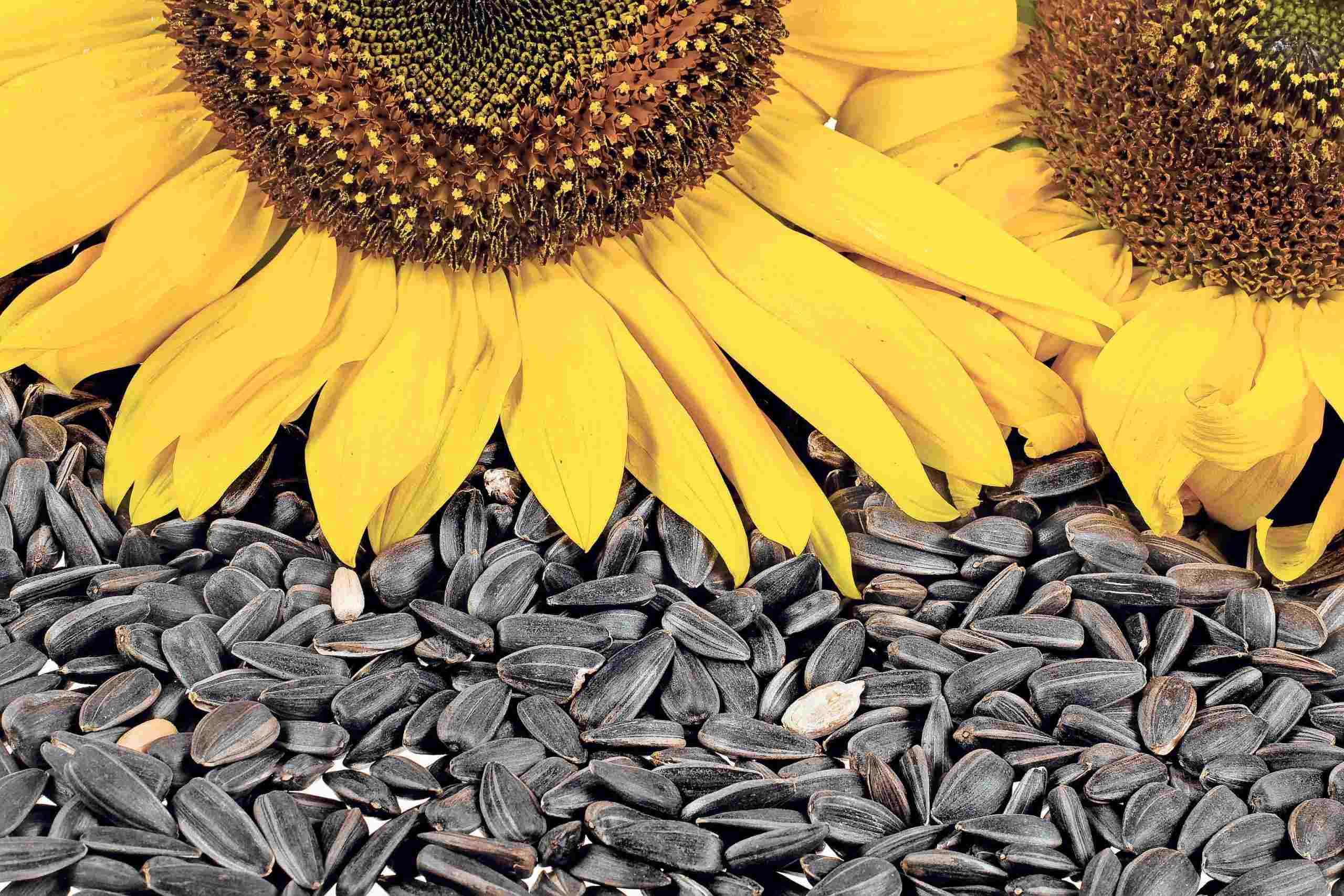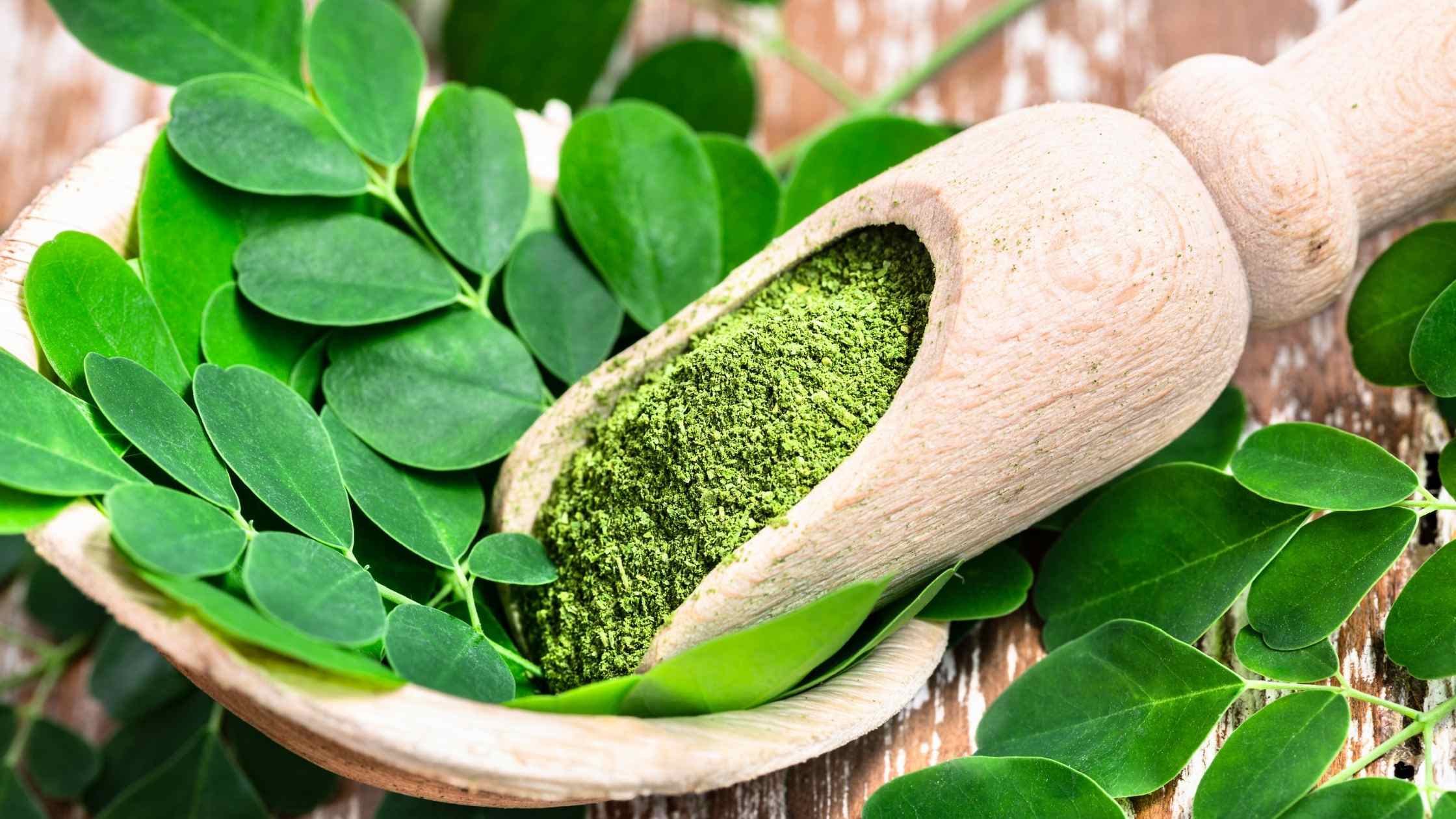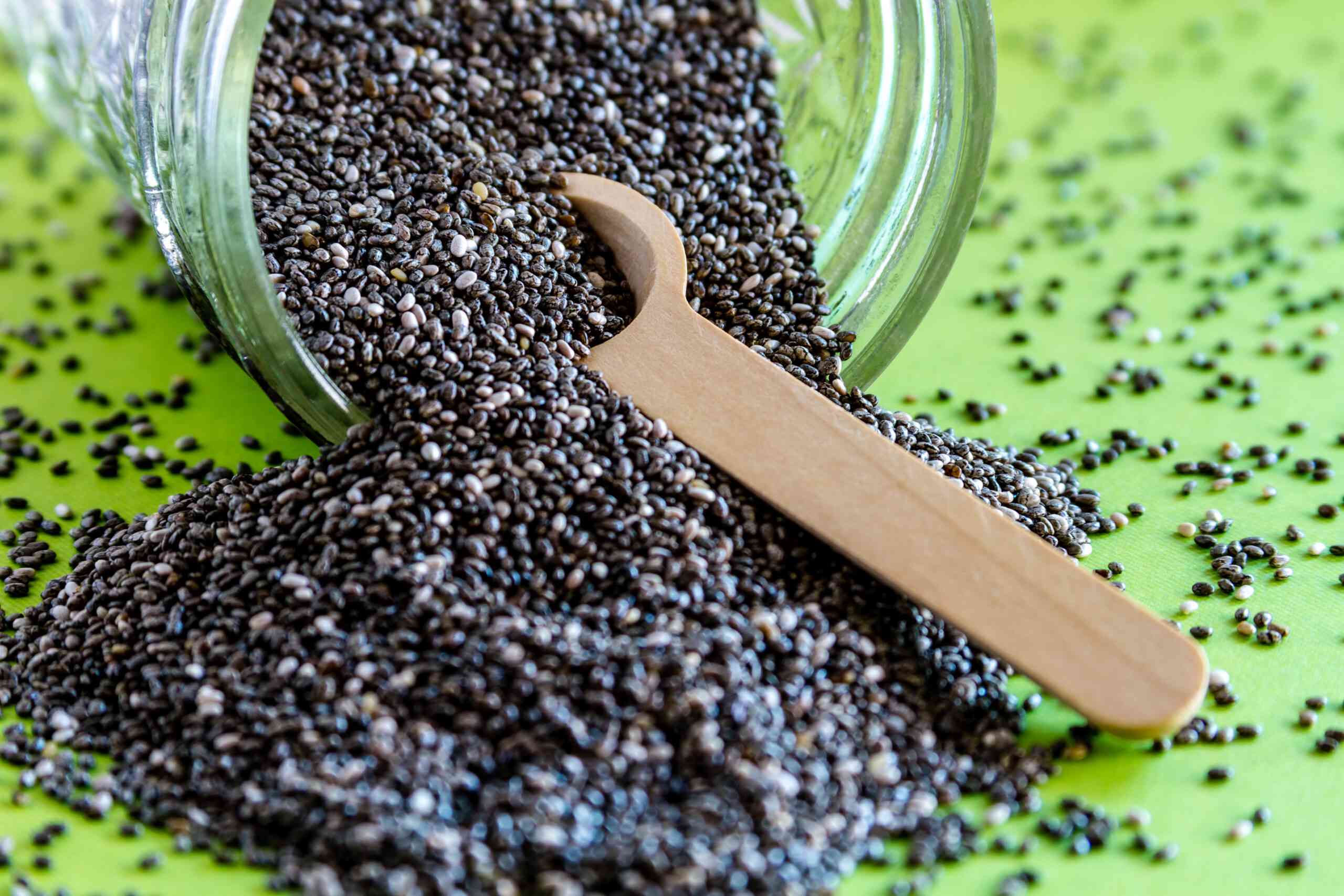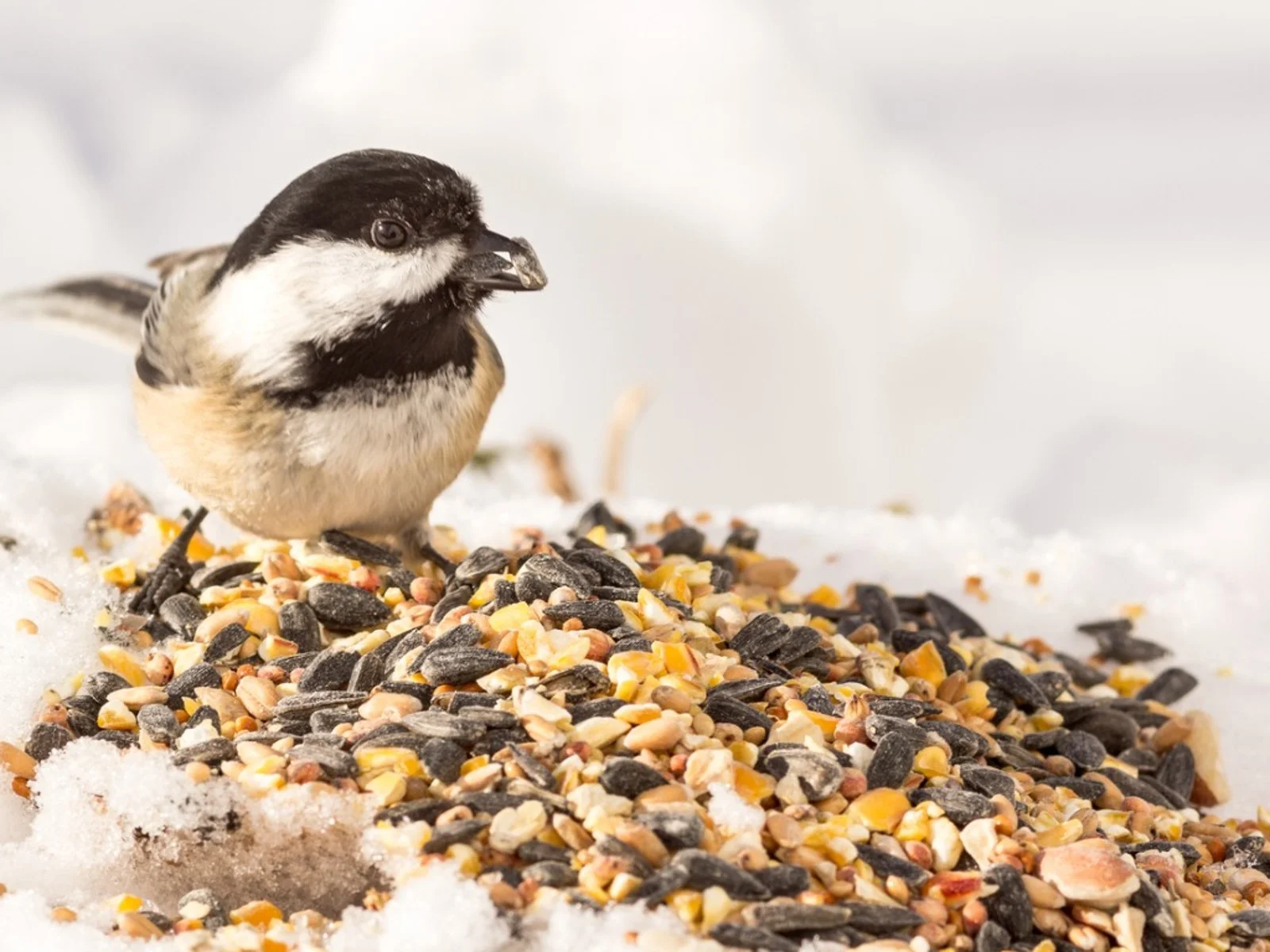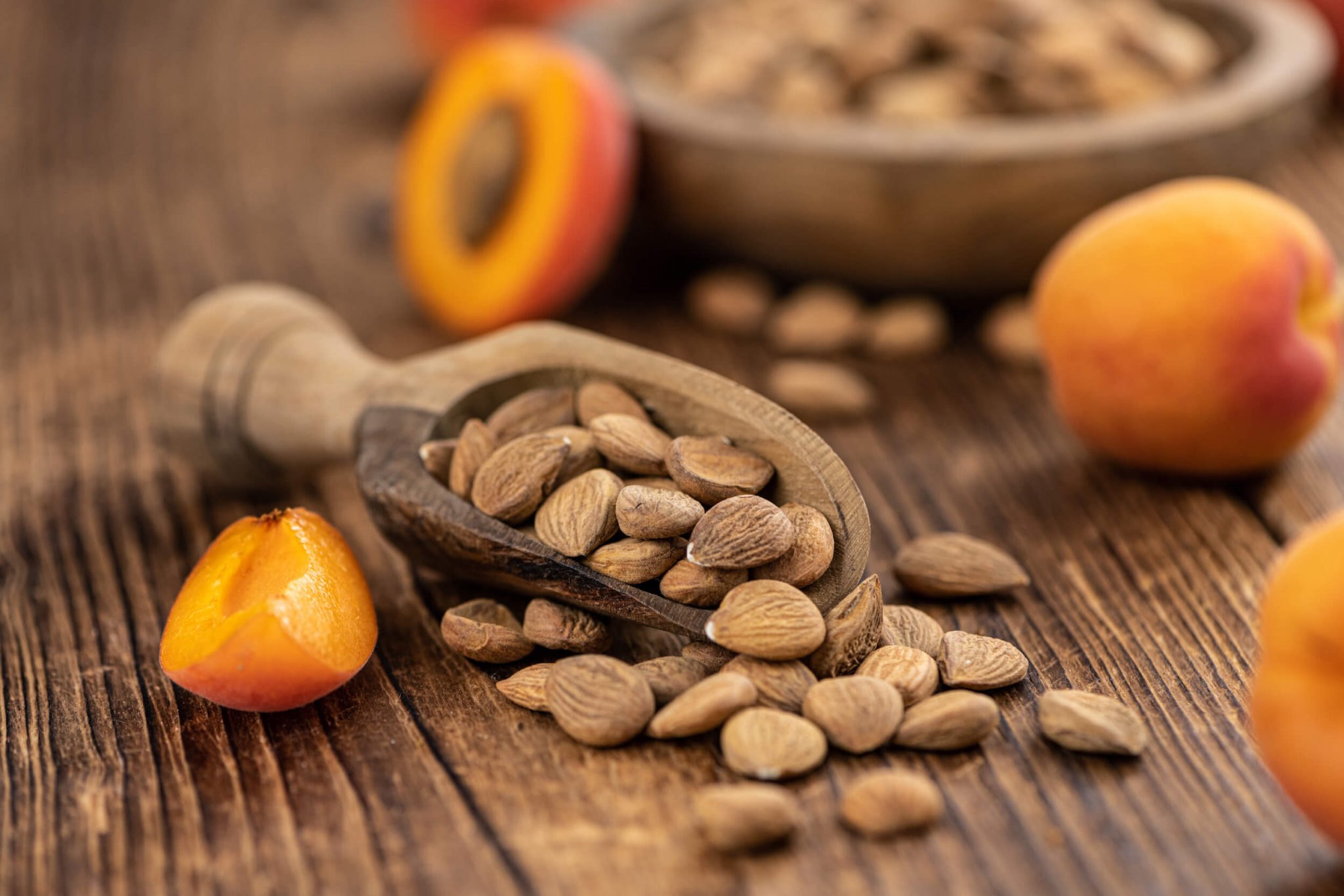Home>Types of Gardening>Edible Gardening>How To Eat Sesame Seeds


Edible Gardening
How To Eat Sesame Seeds
Modified: January 22, 2024
Discover the benefits of edible gardening and learn how to incorporate sesame seeds into your diet. Explore tips and techniques for growing and consuming these nutritious seeds.
(Many of the links in this article redirect to a specific reviewed product. Your purchase of these products through affiliate links helps to generate commission for Chicagolandgardening.com, at no extra cost. Learn more)
Table of Contents
Introduction
Sesame seeds are not only a flavorful addition to meals, but they also offer a host of health benefits. These tiny seeds have been cherished and used for thousands of years, both for their culinary and medicinal properties. Whether you are a health-conscious foodie or simply looking to add a new ingredient to your pantry, sesame seeds are worth considering.
Known for their distinct nutty flavor and delicate crunch, sesame seeds come from the sesame plant, scientifically known as Sesamum indicum. These seeds are typically found in two varieties: white and black. While the white sesame seeds are more commonly used in cooking, the black variety is often utilized for medicinal purposes due to its higher oil content.
Not only are sesame seeds a flavorful addition to dishes, but they are also rich in nutrients. They are an excellent source of protein, healthy fats, dietary fiber, and essential minerals such as calcium, iron, and magnesium. Additionally, sesame seeds are packed with antioxidants and beneficial plant compounds that may promote overall health and well-being.
Incorporating sesame seeds into your diet can provide various health benefits. Studies have shown that these seeds may help reduce inflammation, support heart health, regulate blood sugar levels, enhance digestion, and even strengthen bone health. With their versatile nature and numerous nutritional benefits, sesame seeds make an excellent addition to any balanced and nutritious eating plan.
In this article, we will explore the many health benefits of sesame seeds, delve into their nutritional value, and discover different ways to incorporate them into your diet. We will also share some delicious recipes that showcase the versatility of sesame seeds. But first, let’s take a closer look at the specific health benefits that sesame seeds have to offer.
Health Benefits of Sesame Seeds
Sesame seeds offer several impressive health benefits that make them a valuable addition to your diet. From supporting heart health to promoting digestion, these tiny seeds are packed with nutrients that can have a positive impact on your overall well-being.
One of the standout health benefits of sesame seeds is their potential to reduce inflammation in the body. Sesame seeds contain anti-inflammatory compounds, such as sesamin and sesamol, which may help alleviate symptoms of inflammation-related conditions like arthritis and asthma. Including sesame seeds in your diet can help support a healthy inflammatory response in the body.
Another notable benefit of sesame seeds is their potential to support heart health. These seeds are an excellent source of monounsaturated and polyunsaturated fats, including omega-3 and omega-6 fatty acids. These healthy fats can help improve cholesterol levels, reduce the risk of heart disease, and support overall cardiovascular health.
Sesame seeds are also rich in fiber, which promotes healthy digestion and may help prevent constipation. The high fiber content of sesame seeds can support regular bowel movements and contribute to a healthy gut. Additionally, sesame seeds contain lignans, which have been shown to have potential anticancer properties and may reduce the risk of certain types of cancer.
Additionally, sesame seeds are an abundant source of essential minerals like calcium, iron, and magnesium. Calcium is essential for maintaining strong bones and teeth, while iron is important for oxygen transport throughout the body. Magnesium plays a crucial role in various bodily functions, including muscle and nerve function, immune system support, and the regulation of blood pressure.
Moreover, sesame seeds are rich in antioxidants, including vitamin E and lignans, which help protect the cells from oxidative damage caused by free radicals. These antioxidants may have anti-aging effects and contribute to overall skin health.
Overall, incorporating sesame seeds into your diet can provide a wide range of health benefits. From reducing inflammation and supporting heart health to promoting digestion and offering valuable nutrients, sesame seeds are a versatile and nutritious addition to any well-rounded eating plan.
Nutritional Value of Sesame Seeds
Sesame seeds are not only rich in flavor but also in nutritional value. These tiny seeds pack a powerful punch when it comes to essential nutrients that support overall health and well-being.
One of the standout nutritional aspects of sesame seeds is their protein content. These seeds are an excellent plant-based source of protein, making them particularly valuable for those following a vegetarian or vegan diet. Just two tablespoons of sesame seeds provide around 5 grams of protein, which is beneficial for maintaining and repairing tissues in the body.
In addition to protein, sesame seeds are also a great source of healthy fats. They contain polyunsaturated and monounsaturated fats, including omega-3 and omega-6 fatty acids. These fats are essential for supporting optimal brain function, reducing inflammation, and maintaining healthy skin and hair.
Sesame seeds are also rich in dietary fiber, which is important for digestive health and promoting satiety. The fiber in sesame seeds can help regulate bowel movements, prevent constipation, and contribute to a healthy gut microbiome.
Furthermore, sesame seeds are packed with important minerals. They are a notable source of calcium, which is vital for strong bones and teeth. In fact, sesame seeds contain even more calcium than most dairy products. Additionally, sesame seeds are rich in iron, a mineral essential for oxygen transport and energy production in the body. They also provide significant amounts of magnesium, which is crucial for muscle and nerve function, as well as regulating blood pressure.
Lastly, sesame seeds are a powerhouse of antioxidants. These antioxidants, including vitamin E and lignans, help protect the body’s cells from damage caused by harmful free radicals. They play a key role in reducing oxidative stress and inflammation, which are implicated in the development of chronic diseases.
Overall, sesame seeds are a nutrient-dense food that can contribute to a well-rounded and balanced diet. Whether you sprinkle them over salads, incorporate them into baked goods, or use them as a flavorful topping, sesame seeds offer a wide array of essential nutrients that promote optimal health and vitality.
Different Ways to Incorporate Sesame Seeds in Your Diet
Sesame seeds are incredibly versatile and can be incorporated into your diet in various creative and delicious ways. Whether you’re looking to enhance the flavor of savory dishes or add a nutritional boost to your meals, sesame seeds are an excellent addition. Here are some ideas to get you started:
- Toast and sprinkle: Toasting sesame seeds brings out their natural oils and deepens their flavor. Simply heat a dry skillet over medium heat, add the seeds, and stir frequently until they turn golden brown and become fragrant. Sprinkle toasted sesame seeds over salads, stir-fries, roasted vegetables, or steamed rice for an extra crunch and burst of nutty flavor.
- Baking: Sesame seeds can add a unique twist to your baked goods. Incorporate them into bread, muffins, cookies, or cakes for added texture and flavor. You can sprinkle sesame seeds on top of bread dough before baking or incorporate them into the batter itself.
- Sesame seed butter: Similar to peanut butter, sesame seed butter, also known as tahini, is a creamy spread made from ground sesame seeds. It can be used as a dip for fruits and vegetables, spread on toast or crackers, or used as a base for salad dressings and sauces.
- Asian-inspired dishes: Sesame seeds are commonly used in Asian cuisine and can be a key ingredient in sauces, marinades, and dressings. Add sesame seeds to stir-fries, noodle dishes, or homemade sushi rolls for an authentic and flavorful touch.
- Sesame seed crusts: Create a delicious crust for meats or fish by coating them with a mixture of sesame seeds, breadcrumbs, and spices. This not only adds a crispy texture but also infuses the dish with a delightful sesame flavor.
- Sesame seed seasoning: Blend sesame seeds with other spices and seasonings to create your own unique blend. Sprinkle this homemade seasoning on roasted vegetables, grilled meats, or even popcorn for a flavorful twist.
- Sesame seed smoothies: Add a tablespoon or two of sesame seeds to your favorite smoothie recipe. They blend well and add a nutty flavor, as well as an extra nutritional boost in terms of protein, healthy fats, and minerals.
Remember to store sesame seeds in an airtight container in a cool, dry place to maintain their freshness and prevent them from going rancid. Whether you choose to incorporate them into your savory dishes, baked goods, or smoothies, sesame seeds are a versatile ingredient that can add a delightful flavor dimension and nutritional value to your meals.
Sesame Seeds in Cooking and Baking
Sesame seeds are a popular ingredient in both cooking and baking, adding a unique flavor and texture to a wide range of dishes. Whether you’re a culinary enthusiast or just starting to experiment in the kitchen, incorporating sesame seeds can elevate your cooking and baking game. Here are some ways to use sesame seeds in your culinary adventures:
Cooking:
- Sprinkle on salads: Toasted sesame seeds can add a delightful crunch and nutty flavor to your favorite salads. Sprinkle them over a fresh green salad, Asian-inspired slaw, or even fruit salads for an extra dimension of taste and texture.
- Stir-fries and sautés: Add sesame seeds during the cooking process to give your stir-fries and sautés a nutty flavor. You can either add them at the beginning along with other vegetables and proteins or sprinkle them as a garnish before serving.
- Coating for proteins: Create a flavorful crust for proteins like chicken, fish, or tofu by coating them with a mixture of sesame seeds, breadcrumbs, and your favorite spices. Pan-fry or bake until golden and enjoy the delicious combination of textures and flavors.
- Dips and sauces: Sesame seeds are a key ingredient in many Asian-inspired dips and sauces. Use them to make a classic tahini sauce, or add them to soy-based marinades, dressings, or glazes for an extra complexity of taste.
- Breaded snacks: Upgrade your snack game by coating bite-sized vegetables, cheese bites, or tofu cubes with sesame seeds and breadcrumbs before baking or frying. This adds an addictive crunch and a wonderful nutty flavor.
Baking:
- Bread and rolls: Sprinkle sesame seeds on top of bread dough before baking for a visually appealing and tasty finishing touch. It adds a lovely crunch and enhances the flavor of freshly baked bread and rolls.
- Cookies and bars: Add sesame seeds to your favorite cookie or granola bar recipes for a unique twist. They bring a delicate savory note that balances the sweetness and adds a satisfying texture to your homemade treats.
- Cakes and pastries: Incorporate sesame seeds into cake batters, muffins, or pastries for added texture and flavor. They can be mixed directly into the batter or used as a garnish on top of frosting or glazes.
- Tahini-based desserts: Use sesame seed butter, also known as tahini, as a main ingredient in desserts like cookies, brownies, or energy balls. The rich and nutty flavor of tahini adds depth to sweet treats and pairs well with chocolate and other sweet ingredients.
Sesame seeds truly shine in both cooking and baking, offering a delightful crunch, nutty flavor, and added nutritional benefits. From salads and stir-fries to breads and desserts, the possibilities are endless when it comes to incorporating sesame seeds into your culinary creations.
Sesame Seed Recipes
Sesame seeds are a versatile ingredient that can be used in a wide range of recipes, adding flavor, texture, and nutritional value. Here are a few delicious recipes that showcase the versatility of sesame seeds:
1. Sesame Crusted Tofu: Coat tofu slices in a mixture of sesame seeds, breadcrumbs, and your favorite spices. Pan-fry until crispy on the outside and serve with a side of steamed vegetables or rice for a satisfying and plant-based meal.
2. Teriyaki Sesame Chicken: Marinate chicken breasts in a homemade teriyaki sauce combined with sesame oil and sesame seeds. Grill or bake the chicken until cooked through, and serve with steamed broccoli and brown rice for a flavorful Asian-inspired dish.
3. Sesame Noodle Salad: Toss cooked noodles (such as soba or spaghetti) with a dressing made from sesame oil, soy sauce, rice vinegar, and a touch of honey. Add in your favorite vegetables, such as cucumbers, bell peppers, and shredded carrots. Top with sesame seeds and chopped green onions for a refreshing and light meal.
4. Sesame Kale Chips: Toss kale leaves with olive oil, sesame oil, and a sprinkle of sesame seeds. Spread them out on a baking sheet and bake until crispy. These homemade kale chips are a nutritious and flavorful snack.
5. Sesame Energy Balls: Combine dates, almond butter, sesame seeds, and a pinch of sea salt in a food processor until sticky and well combined. Roll the mixture into small balls and refrigerate until firm. These energy balls make for a healthy and satisfying snack on the go.
6. Sesame Ginger Dressing: Blend together sesame oil, rice vinegar, grated ginger, soy sauce, honey, and a sprinkle of sesame seeds. Drizzle this tangy and savory dressing over a mixed green salad, or use it as a marinade for grilled vegetables or chicken.
7. Sesame Banana Bread: Add a twist to your classic banana bread recipe by incorporating toasted sesame seeds into the batter. The nutty flavor of sesame will complement the sweetness of the bananas, resulting in a delightful and unique loaf.
These recipes are just a starting point to inspire you to experiment with sesame seeds in your cooking. Don’t be afraid to get creative and adapt them to suit your taste preferences. The possibilities are endless when it comes to incorporating sesame seeds into your culinary creations!
Tips for Buying and Storing Sesame Seeds
When it comes to buying and storing sesame seeds, there are a few tips to keep in mind to ensure their freshness and quality. Here are some guidelines to follow:
1. Choose reliable sources: Purchase sesame seeds from reputable suppliers or brands to guarantee their quality and freshness. Look for organic and non-GMO options if that is a priority for you.
2. Check for freshness: Inspect the packaging for any signs of moisture or damage. Ensure that the seeds are clean, dry, and free from any molds or off-putting odors.
3. Opt for whole seeds: Whole sesame seeds retain their natural oils and flavor better than pre-ground or crushed varieties. Buy whole seeds and grind them yourself as needed for the most vibrant flavor.
4. Consider white or black seeds: Both white and black sesame seeds offer similar nutritional value. White seeds are milder in flavor, while black sesame seeds have a richer, nuttier taste. Choose the variety that best suits your recipe or personal preference.
5. Store in a cool, dark place: Transfer the sesame seeds to an airtight container or resealable bag, and store them in a cool and dark pantry or cupboard. Avoid exposing the seeds to heat and sunlight to prevent them from becoming rancid.
6. Use within a reasonable time: Sesame seeds have a relatively long shelf life, but their freshness and flavor diminish over time. It is recommended to use them within six months to ensure the best taste and quality.
7. Toast before use: Toasting sesame seeds before using them enhances their flavor and releases the natural oils. Simply heat a dry skillet over medium heat and toast the seeds until they turn golden brown and become fragrant. Be careful not to burn them, as it can give a bitter taste.
8. Freeze for extended storage: If you need to store sesame seeds for longer periods, consider freezing them in an airtight container or freezer bag. Freezing can help preserve their freshness and prevent them from going rancid.
By following these tips, you can ensure that your sesame seeds remain fresh, flavorful, and ready to enhance your culinary creations. Whether you’re using them as a finishing touch or a central ingredient, properly selecting and storing sesame seeds is essential for enjoying their delicious and nutritious qualities.
Conclusion
Sesame seeds are more than just a flavorful addition to meals – they offer a multitude of health benefits and nutritional value. Packed with protein, healthy fats, dietary fiber, and essential minerals, sesame seeds provide a nutritious boost to any diet. Their anti-inflammatory properties, support for heart health, digestion, and bone health make them an excellent choice for overall well-being.
There are numerous ways to incorporate sesame seeds into your daily meals and snacks. Whether you choose to sprinkle them on salads, use them as a coating for proteins, add them to baked goods, or create flavorful sauces and dressings, sesame seeds bring a unique nutty flavor and a satisfying crunch to your dishes.
When buying sesame seeds, prioritize reputable sources, look for freshness, and consider whole seeds to retain their optimal flavor. Proper storage in a cool, dark place or the freezer will help maintain their freshness and ensure they are ready for use.
Whether you’re an adventurous cook or just starting your edible gardening journey, sesame seeds are a versatile ingredient that can elevate your culinary creations. From savory dishes to baked goods, they offer a delightful flavor, enticing texture, and a valuable nutritional profile.
So, why not start exploring the countless possibilities that sesame seeds have to offer? Incorporate them into your cooking and baking, experiment with new recipes, and enjoy the nutritious benefits that these tiny seeds bring to your table.
